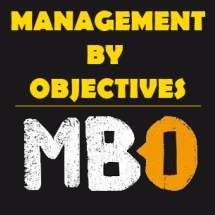5 Methods to determine the value of a Corporation
Table of Contents
Determining the value of a Corporation
Corporate valuation is central to all corporate financial activities. Management’s most important objective is to create value for the owners by increasing the value of the firm. Nearly all business decisions are made with this duty in mind.
There is no single, correct method to value a company. Various parties, such as potential or actual investors, potential acquirers of controlling interests, CFOs and other managers, lenders, and vendors, use different methods depending on their reasons for valuing the company. Most will use several methods to validate assumptions and judgments. Some techniques base valuation on past performance, others on expected performance. Value may be based on assets, profits, or expected cash flow.
5 Methods to determine the value of a Corporation
There are at least five commonly used methods to value a company:
- Book value
- Market value
- Liquidation value
- Replacement value
- Discounted cash flow
1. Book Value
Book value is simply the value of total equity on the balance sheet, total assets minus total liabilities. Equity is created and increased by the sale of stock, and it is increased or decreased by additions or subtractions to retained earnings. Book value is backward looking. It is based on a company’s historical performance, governed by the conventions of double-entry bookkeeping and generally accepted accounting principles (GAAP). Therefore, it does not reflect the changing worth of balance-sheet assets and liabilities or the company’s future earnings potential as a going concern.
Book value is most used in regulated industries. For example, a bank’s required ratio of capital to total assets is based on book value. The rates a public utility is permitted to charge are based on the book value of its assets and an allowable rate of return. Book value has greater importance for financial institutions than many other industries because of the predominance of financial assets on the balance sheet. The presumption is that financial assets are more likely worth their book value than machinery and intangibles.
Book value is used also, however, for bank-loan covenants such as debt-equity ratios because lenders are concerned about worst-case problems requiring liquidation. Basing a loan on a percentage of book value typically results in a lower figure than the same percentage of current market value.
2. Market Value
Market value is the price of a company’s stock multiplied by the number of outstanding shares. The market values of different companies may be compared with two ratios: market to book value and price-earnings ratio.
Market to book Value is often used to compare the values of banks and other financial institutions. The stock of a bank with flat earnings growth and a high percentage of non-performing loans might sell for only two-thirds of book value. The stock of a bank with good earnings growth, a high-quality loan portfolio, and significant non-credit service income might sell for two or even three times book value.
The price-earnings ratio (P-E ratio) is the ratio of a company’s total value to its annual net income. This is often calculated as the ratio of its stock price to annual earnings per share. P-E ratios are easy to understand, easy to calculate, and widely used. Even for experienced securities analysts, they can be a convenient shorthand for more complicated valuation methods. A P-E ratio, however, is based on just one period’s earnings, either recent past or forecasted.
WATCH THIS: The use of an average or representative industry’s P-E ratio to value a particular company, say at 15 times earnings, is judgmental at best. Despite these limitations, industry P-E ratios are often used in valuing private companies in the absence of a comparable transaction. Business brokers will usually know the P-E ratios at which local transactions are taking place.
3. Liquidation Value
Liquidation value is the expected net proceeds, after all expenses and taxes, of selling the company’s assets in an orderly liquidation. The more rapidly the liquidation must be accomplished, the smaller the proceeds are likely to be.
KEY POINT: Liquidation value is often the absolute minimum value for a business. It is relevant for poorly performing companies; for lenders who are concerned with the liquidity of inventory, receivables, and other assets pledged to them as collateral; and for creditors when bankruptcy becomes a possibility.
4. Replacement Value
Replacement value is the amount a potential purchaser would have to pay to duplicate the company’s assets at current market prices. As with liquidation value, replacement value is based strictly on a company’s assets and does not consider its earnings or its potential as an operating business. In some circumstances, this value will set a maximum on a company’s worth. A prospective buyer will start a new business if the price of an existing one is much more than its replacement value.
5. Discounted Cash Flow
A discounted cash flow (DCF) valuation is based on a company’s forecasted future free cash flow discounted at a realistic reinvestment rate, such as its WACC. It is the most rigorous and conceptually sound method to value a company.
Discounted Cash Flow valuation is not as widely understood as are P-E ratios, however. It requires many assumptions and judgments about a company’s future performance, assumptions whose validity may be difficult to assess with agreement by all parties.
The methodology for a Discounted Cash Flow valuation of a company is similar to the present-value methodology described above for capital projects but is applied to the whole company rather than to an individual project. As with capital investment projects, a corporate valuation often recognizes the inherent difficulty in forecasting. It therefore considers several different alternative situations based on more and less favorable assumptions. Those alternatives can be probability weighted to create a risk-adjusted value.
The following basic financial relationships are central to applying the Discounted Cash Flow methodology to valuing a company:
- Corporate value = market value of debt plus market value of shareholders’ equity.
- Corporate value = net present value of future free cash flow.
- Shareholders’ equity = corporate value minus market value of debt.
- Shareholders’ equity = present value of future free cash flow minus market value of debt.



